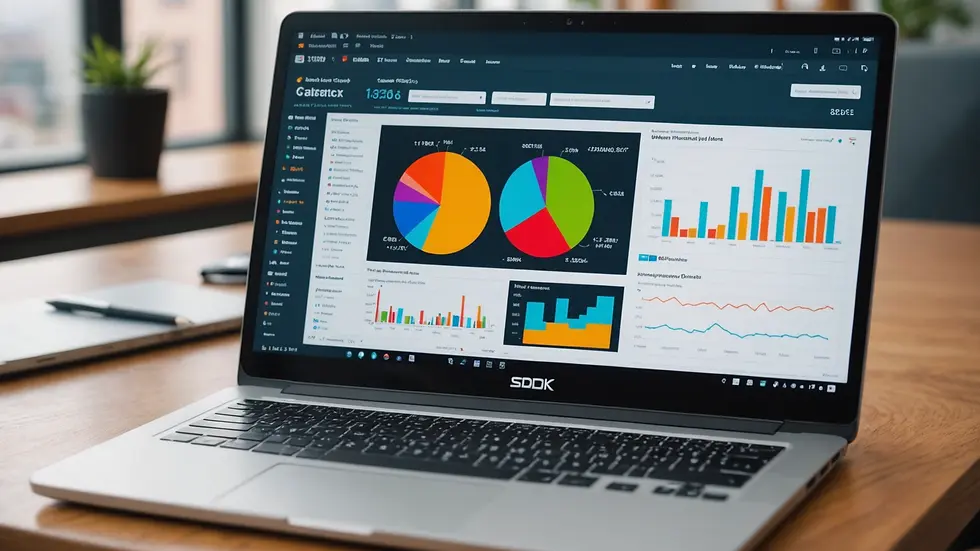Best Practices for Managing Accounts Receivable
- SoFla Prime
- Feb 24
- 4 min read
Managing accounts receivable is crucial for any business. It represents the money owed to you by customers who have purchased goods or services on credit. Efficient accounts receivable management can significantly impact your cash flow, liquidity, and overall financial health. In this blog post, we'll discuss best practices for managing accounts receivable effectively.
Understanding Accounts Receivable
Before we dive into best practices, let’s clarify what accounts receivable entails. When a customer purchases a product or service on credit, your business records this transaction as an account receivable. This means you expect to receive payment in the future. Managing these accounts effectively is key to maintaining positive cash flow and ensuring your business stays financially healthy.

Effective management of accounts receivable is not just about tracking customer payments; it involves various strategies and processes to ensure timely payment and minimize bad debts. Let’s explore some key practices.
Establish Clear Credit Policies
Having clear credit policies can prevent difficulties later on. Start by defining who qualifies for credit terms and the duration of payment allowed. A study by the Paystream Advisors indicates that companies with explicit credit policies experience 30 percent fewer late payments.
Evaluate Customer Risk: Before granting credit, analyze your customer's credit history. Use credit reports and evaluate their payment habits.
Set Payment Terms: Determine appropriate payment periods, typically ranging from 30 to 60 days. Make these terms clear on invoices and contracts.
Implementing these steps can help you manage risks and ensure clarity with your customers.

Monitor Aging Accounts Receivable
Regularly tracking the aging of your accounts receivable is vital. Aging reports categorize receivables based on how long invoices have been outstanding. This helps identify which accounts need urgent attention.
Use Aging Reports: Create aging reports on a weekly or monthly basis. Look for accounts overdue by more than 30 days.
Prioritize Follow-Ups: Focus your follow-up efforts on overdue accounts. A gentle reminder can often prompt immediate payment.
By staying on top of aging accounts, you can take corrective actions quickly and reduce the chances of uncollectible accounts.
What are the 5 C's of Accounts Receivable Management?
The 5 C's of accounts receivable management are essential factors to consider when evaluating customer creditworthiness. Understanding these can improve your decision-making process.
Character: This refers to the customer's reputation for repaying debts. Look at their payment history and any previous engagements.
Capacity: Assess the customer’s ability to pay. Review their income statements and cash flow situation.
Capital: Evaluate the financial health of the customer. Strong equity indicates higher repayment potential.
Conditions: Analyze economic factors that might affect the customer’s ability to pay, such as industry trends and market conditions.
Collateral: Sometimes, some form of guarantee increases security. Understanding what assets the customer has can mitigate risks.
Considering these factors can aid in making better credit decisions.

Implement Efficient Invoicing
Sending clear and timely invoices is one way to improve your accounts receivable management. A well-structured invoice makes it easier for customers to pay promptly.
Use Professional Templates: Invest in professional invoicing software that offers customizable templates.
Clearly State Payment Terms: Highlight your payment terms prominently. This reinforces expectations with customers.
Include Contact Information: Provide pertinent contact info for inquiries or disputes. Clear communication reduces payment delays.
Implementing efficient invoicing processes helps streamline collections and encourages faster payment.
Foster Strong Customer Relationships
Building relationships with your customers can lead to smoother transactions. Some diligent practices include:
Regular Communication: Stay connected with customers. Regular follow-ups can create a sense of partnership.
Be Flexible: While policies are important, being accommodating can sometimes mean the difference between payment and delay.
Provide Excellent Service: High-quality service encourages repeat business and better payment tendencies. Satisfied customers are more likely to prioritize paying their bills.
Strengthening relationships not only enhances the customer experience but can also improve your accounts receivable management.
Embrace Technology
Embracing technology can enhance your efficiency in managing accounts receivable. There are various tools and software available:
Accounting Software: Invest in robust accounting software that helps you manage invoicing, payments, and reports.
Automated Reminders: Utilize automation tools to send reminders for upcoming and overdue payments.
Mobile Payment Options: Offer customers convenient payment methods, such as mobile payment options and online payments.
The right technology can save time and reduce human errors in the accounts receivable process.
Evaluate and Adjust Your Strategies
Finally, it’s essential to regularly evaluate and adjust your accounts receivable management strategies.
Review Performance: Analyze your accounts receivable turnover ratio to gauge how effectively you are collecting payments.
Gather Feedback: Seek feedback from your customers about their invoicing and payment experience.
Train Staff: Ensure your team is knowledgeable about current best practices and tools for managing accounts receivable.
Continuous improvement is key to enduring success in managing your accounts receivable.
Final Thoughts
Managing accounts receivable effectively is instrumental in sustaining a healthy business. By following these best practices, such as establishing clear credit policies, monitoring aging accounts, implementing efficient invoicing, fostering customer relationships, embracing technology, and regularly evaluating your strategies, you can enhance your accounts receivable management.
For more information about how to optimize your accounts receivable processes, consider working with experts in the field. Learn more about accounts receivable management and elevate your business today!




Comments